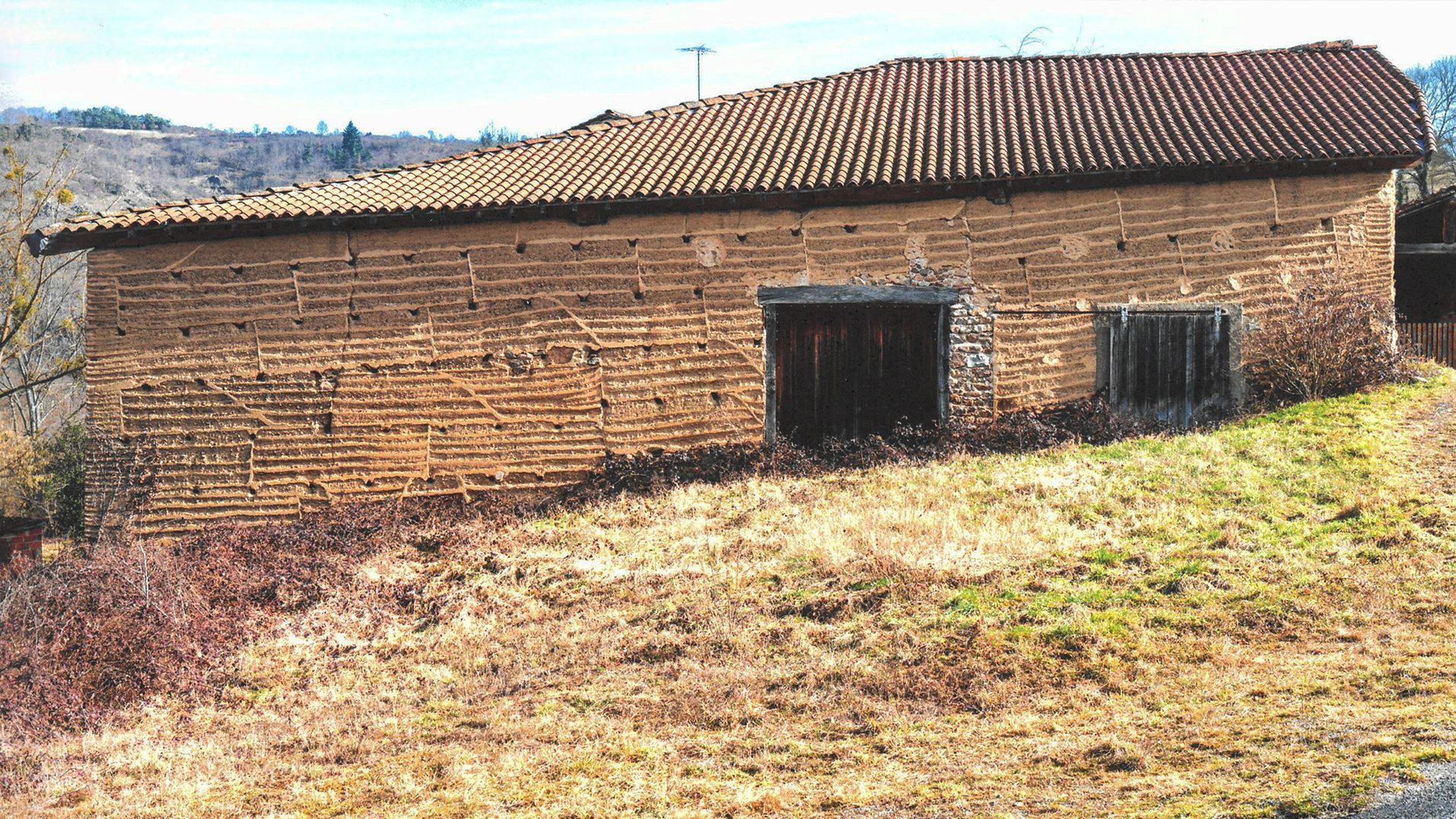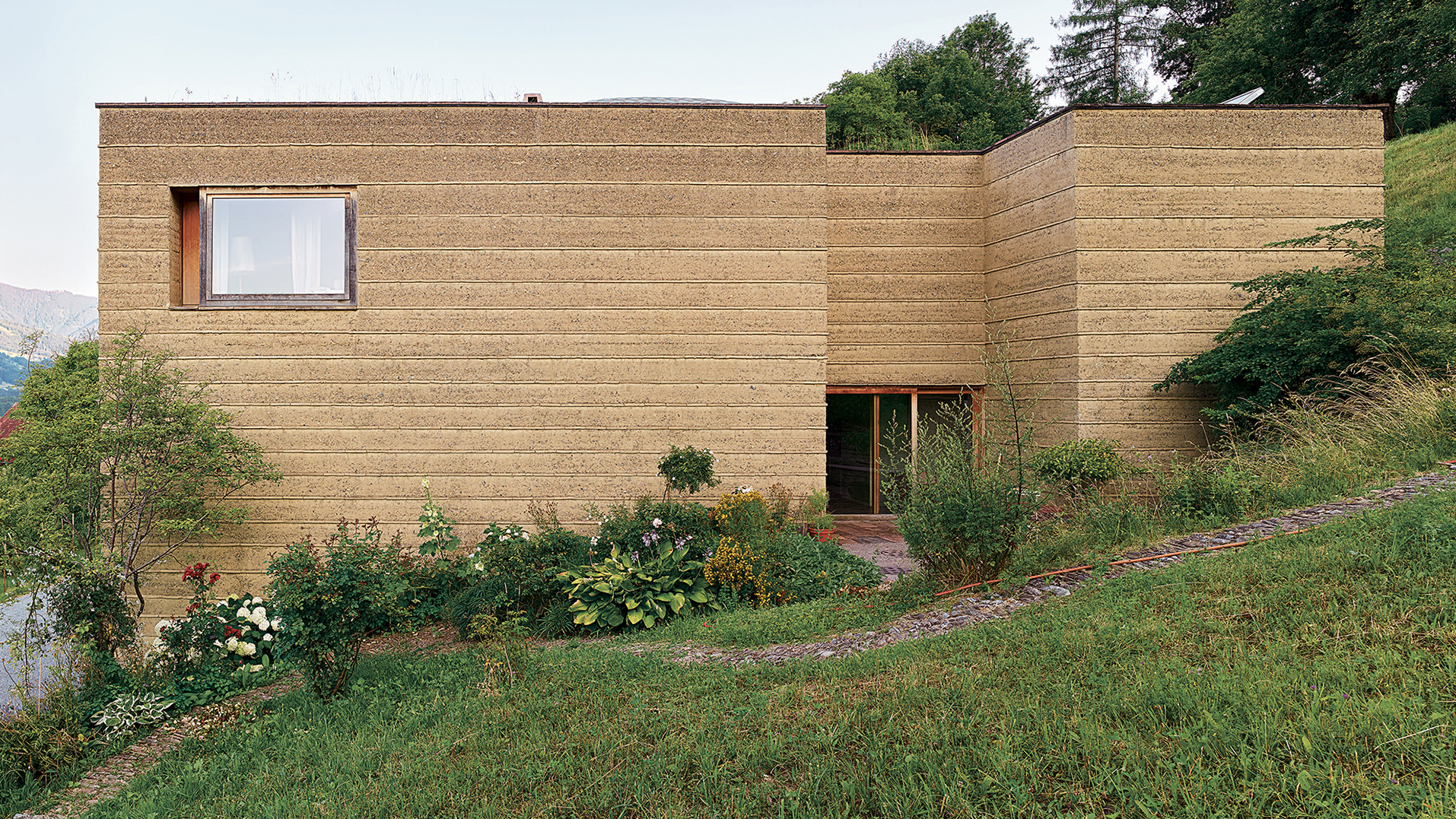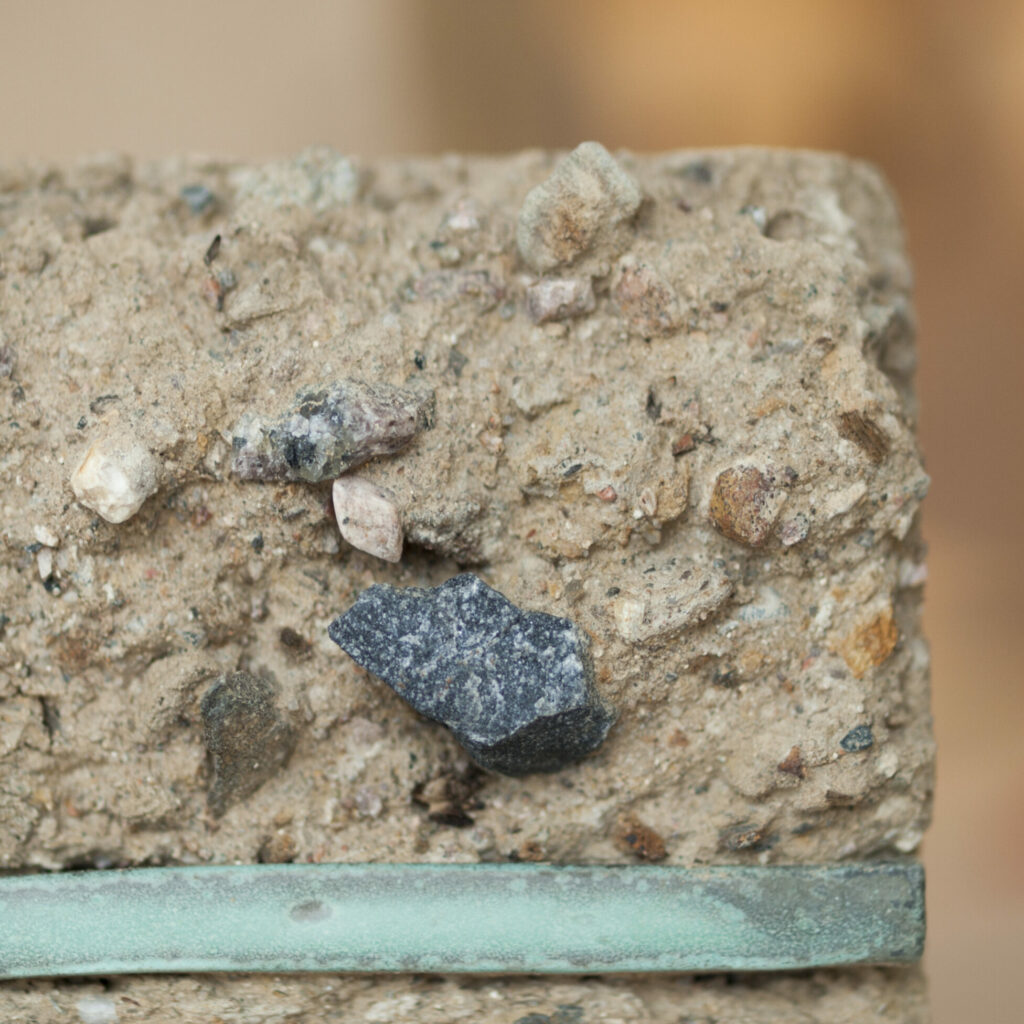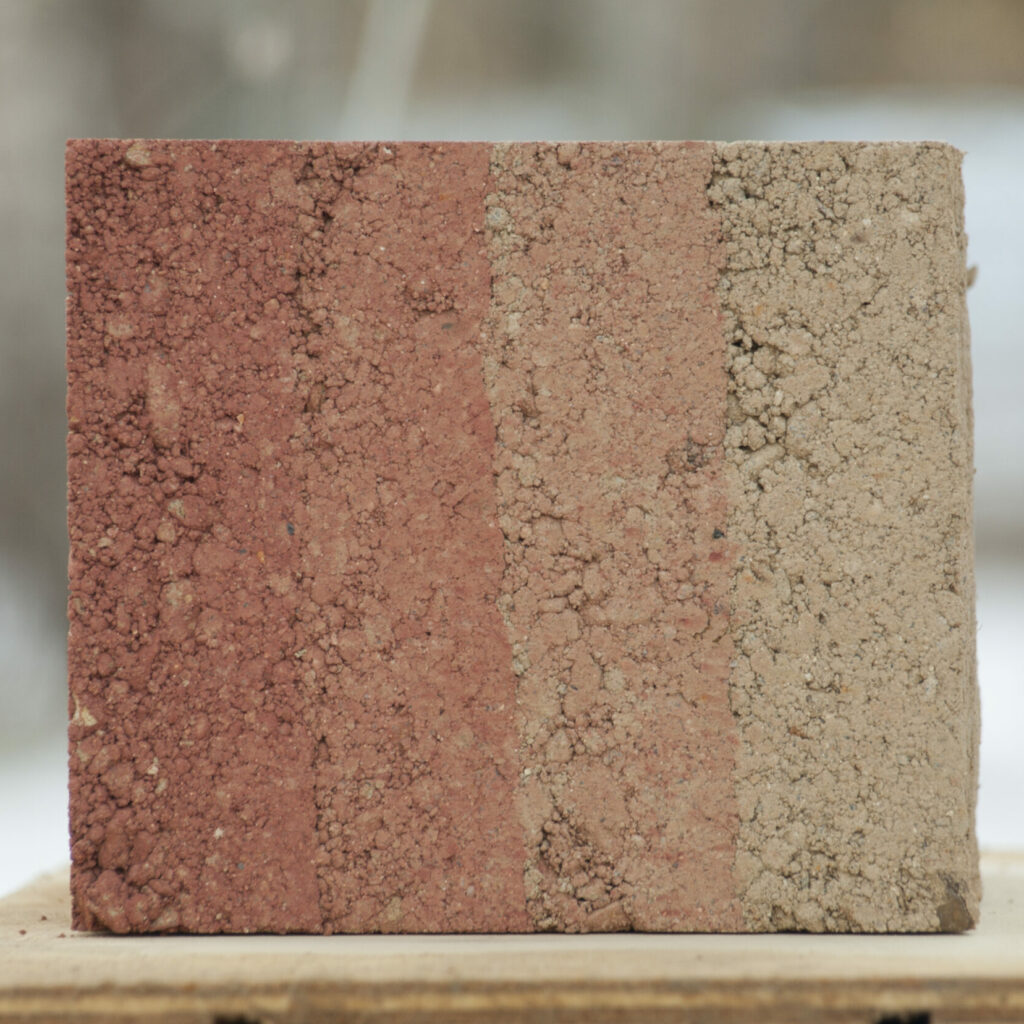EXPLORING EROSION AND PIGMENTATION OF
RAMMED EARTH
Introduction
Rammed earth is an ancient building technique consisting of compacted earth (clay, sand, gravel, stones) in formwork. 1/3 of the world’s population is estimated to live in earth houses today (Boltshauser et al., 2018). There is a tradition of building houses with this technique in Sweden as well, these houses are called “stamphus” (Palmgren, 2003). However, it is not so common in Sweden or Europe anymore, since the new materials and industries of the industrial revolution pushed it away. A revival of rammed earth in Europe is now happening thanks to prefabrication and climate awareness.
Rammed earth is beneficial in terms of energy use compared to other materials. Excavated earth from the site or nearby constructions could ideally be used. No energy other than that for transport and the tools for compacting the earth is necessary. It is used raw, without being fired. This results in very low climate impact compared to other materials.
Rammed earth can be used structurally in compression but should not be used in tension. It has good properties for keeping a stable indoor humidity and temperature and it’s also good for acoustic insulation. The main downside at the moment is that it is costly in labour. But Martin Rauch and his company Lehm Ton Erde in Austria have developed a prefabrication method that could reduce the costs compared to in situ construction (Rauch 2015).


Modern rammed earth constructions in USA and Australia are often stabilized with cement or lime, and most of the images from a google search are showing rammed earth stabilized with these materials. Even a small percentage of added cement will result in high embodied carbon since rammed earth constructions are massive. Martin Rauch (2015) in Austria explains that unstabilized rammed earth without cement or lime is superior. Without cement rammed earth constructions can easily be recycled (or just left on site) when demolished. The material properties in regard to breathability and humidity control are also better without cement. Erosion from rain will occur without added cement, but is that a problem or a possibility?
It turns out that erosion is more of a psychological problem than a technical one. An eroding façade is for many a cause for concern, but this is mostly due to a lack of knowledge and a lack of trust in the inherently changeable and impermanent nature of earth structures. It is therefore important that we develop an architectural language appropriate to these material characteristics that can then help facilitate a broader acceptance and more widespread implementation of rammed earth constructions.
Martin Rauch
This was a decisive factor to why I focused this project on showing that eroded rammed earth can be very beautiful. During the spring semester of 2022 I will continue studying rammed earth in my master thesis project. So this project has also served as a pre-study to that.
Content
- Introduction
- Erosion protection
- Finding suitable earth
- Ceramic erosion checks
- Erosion tests
- Pigmentation
- Conclusion
- References and contact


